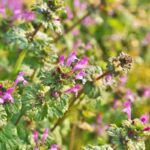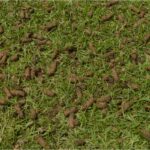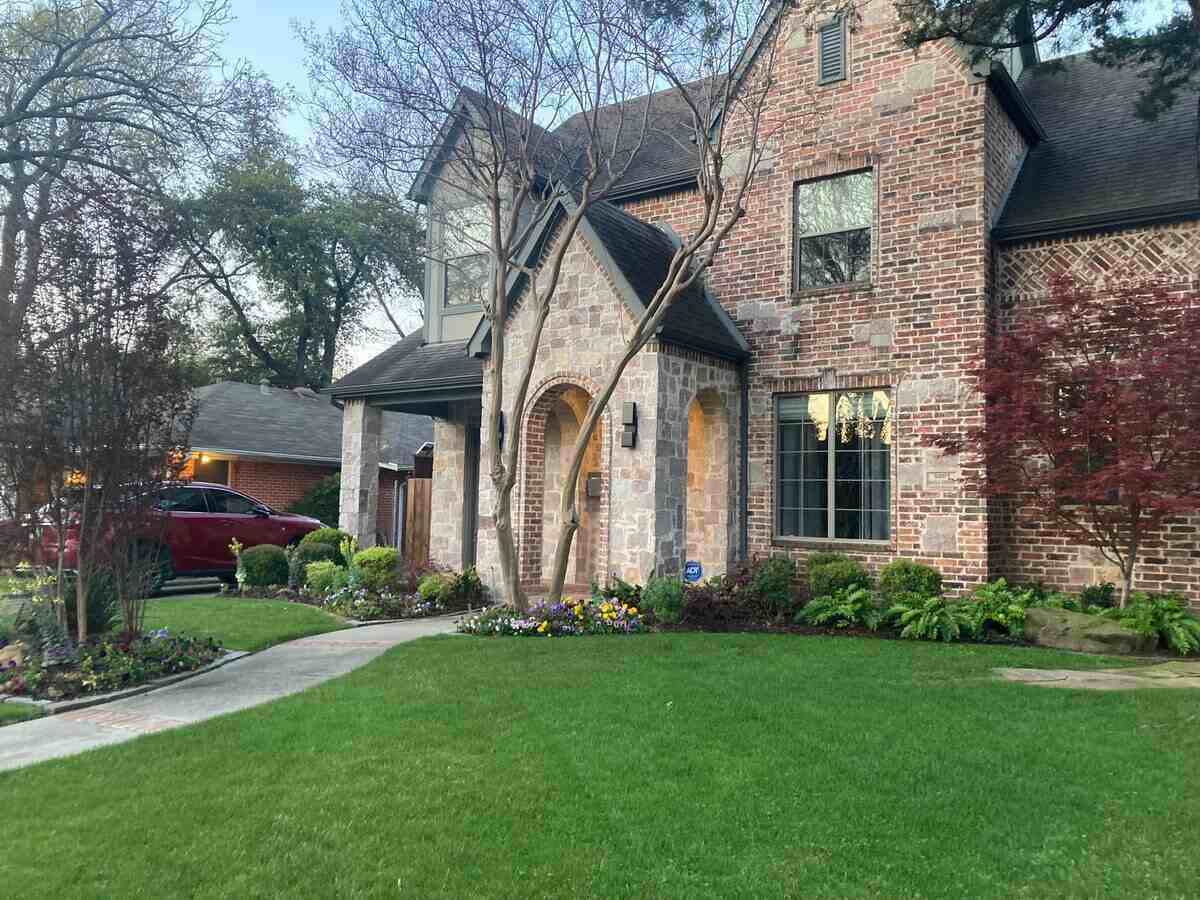
Choosing the best grass for Texas, whether warm-season or cool-season grasses, depends on your region. Either way, these grasses are essential to creating a home that complements the state’s natural beauty with a healthy green lawn.
From the history-steeped Piney Woods to the delightful peaches of the Hill Country, Texas has it all. So, let’s look at the best types of grass for the Lone Star State, including tips on how to take care of them and how to choose the best type based on your location.
Skip to the end and read our tips on how to choose the best grass for your Texas lawn, where we give helpful tips on which grass types work best depending on your needs.
Best Warm-Season Grasses
Bermudagrass
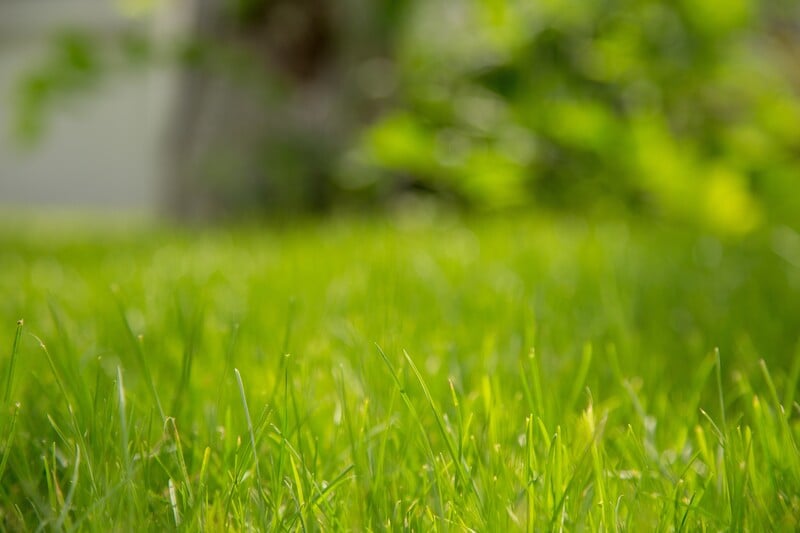
Adapted through most of the state, Bermudagrass is highly drought-tolerant, withstanding the hot and dry Texas summers. This warm-season turfgrass is also highly adaptable to different soil types, as long as it is exposed to full sun.
Its excellent traffic tolerance and quick ability to recover make it an ideal option for homes with children or pets. The main downsides are the tendency to develop thatch and the need for frequent mowing due to its fast growth rate. As long as it receives proper care, Bermudagrass is a perfect choice for homeowners who want a resilient lawn.
- Classification: Warm-season grass
- Spreads by: Stolons and rhizomes
- Shade tolerance: Low; thrives in full sun
- Drought tolerance: High
- Foot traffic tolerance: High
- Maintenance needs: Needs frequent mowing due to fast growth rate; develops thatch easily; needs regular fertilization
- Mowing height: Set the mowing height between 0.5 and 1.5 inches for hybrid Bermudagrass cultivars. Mow common Bermudagrass down to 1.5 to 2.5 inches.
- Potential for disease: Good resistance to disease, although diseases are common; low resistance to insects
- Soil pH: 6-6.5
- Soil type: Tolerates most soil types
- Other notes: Bermudagrass is quickly established by sprigs or seeds, but for it to successfully grow in the Panhandle region and West Texas, extra care is needed (frequent irrigation, mowing, and fertilizing).
- Grows best in: North Texas, Central Texas, East Texas, South Texas, and the Gulf Coast
Grass Seed Options:
– Scotts Turf Builder Bermudagrass (10-lb. bag)
– Hancock Seed Co. Bermudagrass (50-lb. bag)
Zoysiagrass
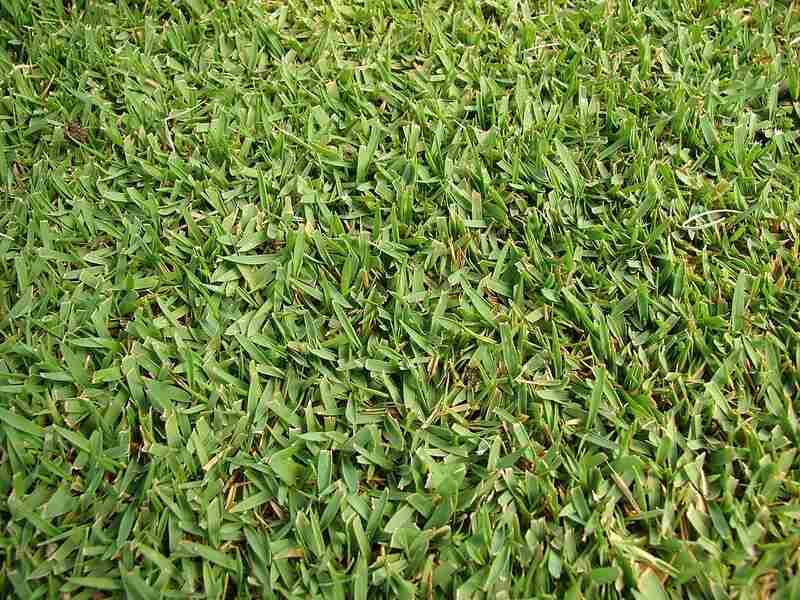
Zoysiagrass’s improved varieties have the upper hand on Bermudagrass because they require less fertilization and less frequent mowing than Bermuda. However, although this grass is also drought-tolerant, Zoysiagrass turns brown sooner during extended drought conditions.
Additionally, this grass is known for its slow growth habit, which means it also recovers from damage slowly. Overall, Zoysiagrass is a great choice for Texas homeowners who want a durable and visually appealing lawn with fewer maintenance needs.
- Classification: Warm-season grass
- Spreads by: Stolons and rhizomes
- Shade tolerance: Moderate
- Drought tolerance: Moderate to High
- Foot traffic tolerance: High, but recovers slowly from damage
- Maintenance needs: Low nitrogen fertilization requirements, although it’s prone to thatch build-up.
- Mowing height: Set mowing height between 1 and 2 inches.
- Potential for disease: Good disease tolerance overall
- Soil pH: 6-6.5
- Soil type: Well-draining, some cultivars are more tolerant of a wide range of soils than others.
- Other notes: There are at least 11 species of Zoysiagrass from which homeowners can choose. This gives homeowners a good array of shades of green and textures. To cultivate this grass in the Panhandle region and West Texas, extra irrigation and fertilizing are necessary.
- Grows best in: North Texas, Central Texas, East Texas, South Texas, and the Gulf Coast
Grass Plug and Seed Options:
– Zoysia Plugs (50 Large Grass Plugs)
– Zoysia Plugs (50 Full & Lush Grass Plugs)
– Zoysia Plugs (100 Plugs)
– Zenith Zoysia Grass Seeds (1/8 lb. of seeds)
St. Augustinegrass
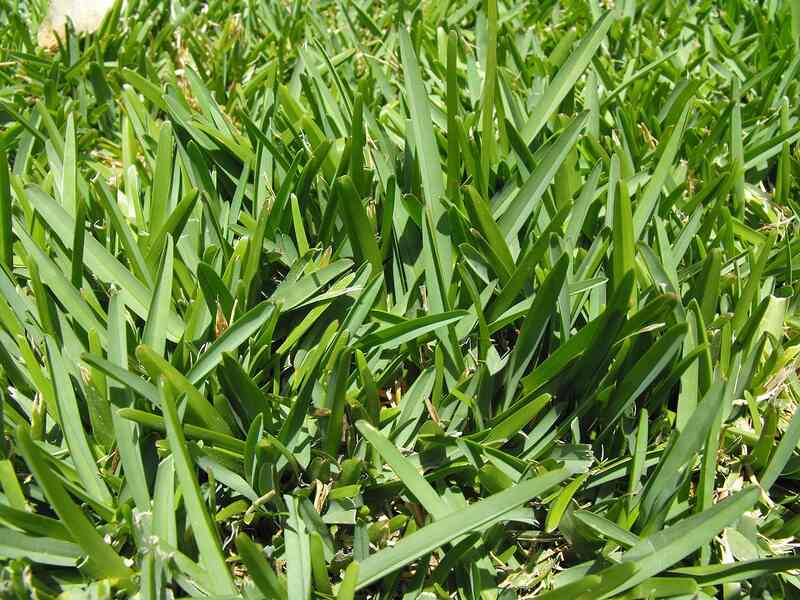
Is your lawn surrounded by trees or high buildings? That’s no problem for St. Augustinegrass. This turfgrass has the best shade tolerance out of its other warm-season friends. It fits perfectly on a home lawn located in a partially shaded area.
When it comes to drought, St. Augustine is not as tolerant as Bermudagrass or Zoysiagrass, so it will need extra irrigation and fertilization in Central and West Texas. It is best adapted to Southeast Texas, along the Gulf Coast.
- Classification: Warm-season grass
- Spreads by: Stolons
- Shade tolerance: Moderate. It is the most shade-tolerant warm-season grass.
- Drought tolerance: Moderate to High
- Foot traffic tolerance: Low
- Maintenance needs: Needs frequent mowing due to fast growth rate; develops thatch easily; needs regular fertilization. (Check out our guide on When to Fertilize Lawns in Texas for more information.)
- Mowing height: Set the mowing height between 3.5 and 4 inches.
- Potential for disease: Moderate to high
- Soil pH: 6-7.5
- Soil type: Tolerates many soil types; prefers moderately fertile and moist (not waterlogged) soils; doesn’t tolerate soil compaction
- Other notes: St. Augustinegrass is not recommended for the northern one-third of Texas. The severe winters can seriously damage and kill the grass.
- Grows best in: Southeast Texas, along the Gulf Coast
Grass Plug Options:
– Seed Ranch St Augustine Seville Grass Plugs (2 Trays)
– Seed Ranch St Augustine Floratam Grass Plugs (2 Trays)
Centipedegrass
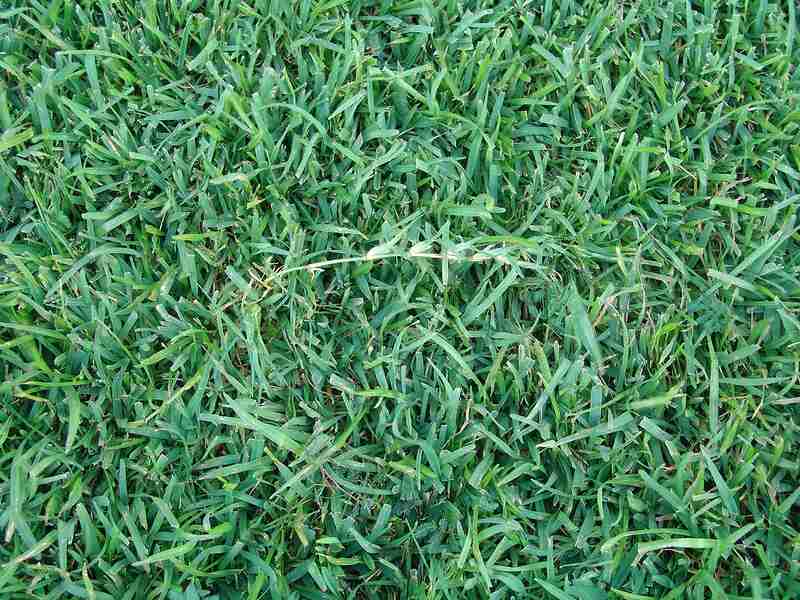
Best adapted to the acidic soils of East Texas, centipedegrass grows slowly but surely under full sun or light shade. Centipedegrass is known for its good disease resistance and low maintenance requirements, so you won’t have to spend too much time caring for this lawn.
However, centipedegrass is sensitive to many of the common herbicides available on the market. It also can’t withstand prolonged drought periods and has a low foot traffic tolerance.
- Classification: Warm-season grass
- Spreads by: Stolons
- Shade tolerance: Moderate
- Drought tolerance: Moderate
- Foot traffic tolerance: Low
- Maintenance needs: Low mowing and fertilization needs
- Mowing height: Set the mowing height between 1 and 2 inches.
- Potential for disease: Good resistance to diseases and insects
- Soil pH: 5-6
- Soil type: Acidic, infertile, at least moderately good drainage (very dense, clay soils produce poor results)
- Other notes: Centipedegrass is best established from sod since seed grows slower than other grass types. Over-fertilizing and over-watering may lead to disease.
- Grows best in: East Texas
Grass Seed Options:
– Gulf Kist Coated Centipedegrass Seeds (1 lb.)
– Scotts EZ Seed Patch and Repair Centipedegrass (3.75 lbs.)
– TifBlair Centipedegrass (5-lb. bag)
Buffalograss
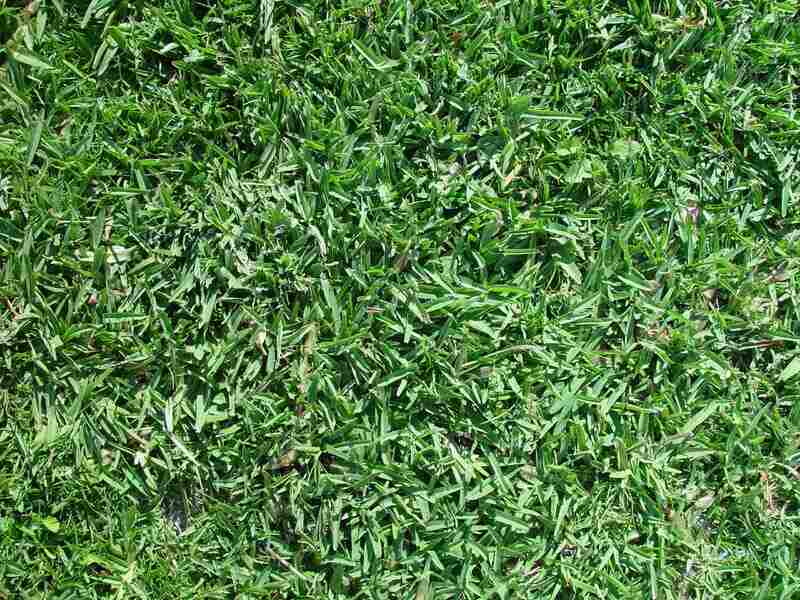
If you’re looking for an easy-to-maintain warm-season grass, buffalograss is for you. Best adapted from Central to West Texas regions, this turfgrass needs little fertilizing and mowing. It prefers full sun exposure and has a low shade tolerance. On the other hand, it has very good drought and cold tolerance, which guarantees it will withstand the Texas climate.
One of the downsides is that weed control will be necessary. (Check out our guide on Common Lawn Weeds in Texas for more information.) But it’s a minor drawback when compared to buffalograss’s overall practicality. Additionally, because its foot traffic tolerance is very low, it is best suited as a low-use turfgrass.
- Classification: Warm-season grass
- Spreads by: Stolons
- Shade tolerance: Low
- Drought tolerance: High
- Foot traffic tolerance: Low
- Maintenance needs: Low fertilizer and mowing needs. Requires weed control.
- Mowing height: Set the mowing height between 2 and 3 inches.
- Potential for disease: Good tolerance against diseases and insects
- Soil pH: 6.5-7.5
- Soil type: Native clay soils, not sandy soils
- Other notes: Buffalograss is not recommended for high-rainfall regions like East Texas. When overwatered, this grass becomes vulnerable to weeds. When grown in the far West region (from Pecos County to El Paso), extra irrigation is needed.
- Grows best in: West Texas, South Texas, Central Texas, North Texas, and the Panhandle region
Grass Seed Options:
– Everwilde Farms Buffalograss Seeds (1 lb. of seeds)
– Buffalograss seed (primed) (5-lb. bag)
Seashore Paspalum
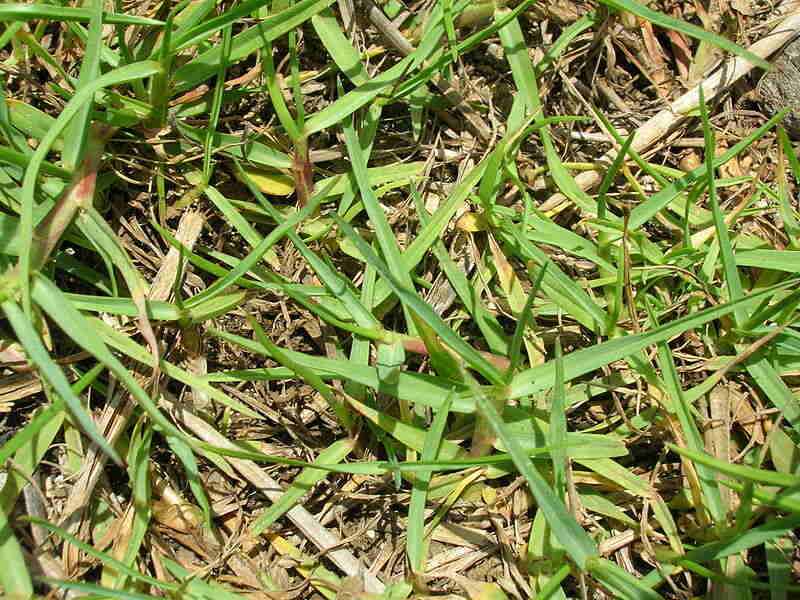
Seashore paspalum is a perennial warm-season turfgrass with a special resistance to salt and wet soils. For this reason, it fits the climate conditions of southern (especially coastal southeastern) Texas perfectly. It tolerates cloudy days; however, it is essential to note that this is not a highly shade-tolerant grass type and prefers full sun.
Seashore paspalum is most commonly used for golf courses, sports turf, and high-maintenance home lawns that have highly saline irrigation water. It needs regular mowing to maintain its recommended height.
- Classification: Warm-season grass
- Spreads by: Stolons and rhizomes
- Shade tolerance: Low to Moderate, but has slightly better shade tolerance than Bermudagrass
- Drought tolerance: Moderate
- Traffic tolerance: Moderate
- Maintenance needs: Moderate; needs moderate fertilizing and water, but frequent mowing
- Recommended mowing height: Set the mowing height between 1 and 2 inches.
- Potential for Disease: Moderate. Common diseases include large patch and dollar spot. (See How to Get Rid of Dollar Spot for more information.)
- Soil pH: Tolerates a wide soil pH range, from 3.6 to 10.2
- Soil Type: Tolerates a wide range of soils, including wet, saline soil.
- Other Notes: It can also flourish in Central Texas and West Texas with a bit of extra watering and fertilizing. It has less cold tolerance than Bermuda. May be hard to find a supplier.
- Grows best in: Southern Texas and on the Gulf Coast
Grass Seed and Sod Options:
– Seed Ranch SeaShore Paspalum Coated Grass Seed – 1 lb.
– Seed World SeaShore Paspalum Grass Seeds (various amounts)
– Other places to purchase seashore paspalum sod
Best Cool-Season Grasses
Perennial Ryegrass
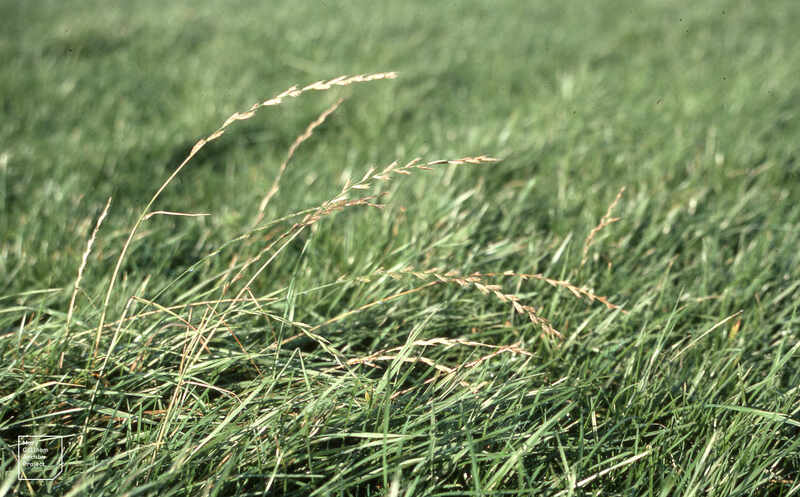
Perennial and annual ryegrasses can be used throughout the state as temporary lawns to prevent erosion. From late September to October, Bermudagrass lawns can be overseeded with perennial ryegrass for winter color. In the High Plains of North Texas, perennial ryegrass can also be used as the dominant variety in a lawn as long as it has supplemental irrigation.
With moderate maintenance requirements, perennial ryegrass won’t create thatch. When mixed with other cool-season grasses, it can have improved shade tolerance and be successfully grown in areas that don’t get full sun exposure. And if you want a lawn with good foot traffic resistance, perennial ryegrass might be ideal for you.
- Classification: Cool-season grass
- Spreads by: Has a bunch-type growth habit
- Shade tolerance: Low
- Drought tolerance: Low
- Foot traffic tolerance: High
- Maintenance needs: Moderate mowing and fertilization requirements. Thatch is not significant.
- Mowing height: Set mowing height to 1.5 to 2.5 inches
- Potential for disease: High. Common diseases include gray leaf spot, red thread, and leaf spot/melting-out.
- Soil pH: Can grow in soils with a pH between 5 and 8, but prefers between 6 and 7
- Soil type: Prefers good drainage and fertility, but can tolerate some poor drainage
- Other notes: When used to overseed, the mowing height should be determined by the grass species being overseeded.
- Grows best in: North Texas
Grass Seed Options:
– Outsidepride Perennial Ryegrass Seed (5 lbs.)
– Eretz ProTurf Perennial Ryegrass Fine Lawn Seed (choose your size)
Tall Fescue

Photo Credit: Aaron J. Patton, Ph.D. / Turfgrass Extension Specialist at Purdue University
Suitable for North Texas, where warm-season grasses may suffer winter injury, tall fescue is more shade and drought-tolerant than its fellow cool-season grasses. Tall fescue is also frequently used in cool-season seed mixes.
This turfgrass can tolerate shade well, but it is not suitable for high-traffic areas. It is considered to have moderate maintenance needs. Its adaptability to a variety of soil conditions, resistance to diseases, and insignificant thatch production are the key strengths of this turfgrass.
- Classification: Cool-season grass
- Spreads by: Produces short rhizomes but has a bunch-type growth habit
- Shade tolerance: Moderate
- Drought tolerance: Moderate to High
- Foot traffic tolerance: Moderate
- Maintenance needs: Frequent mowing. Does not produce significant thatch.
- Mowing height: Set the mowing height to 2 inches when the grass reaches 3 inches tall.
- Potential for disease: Tolerant of most diseases when properly maintained.
- Soil pH: 5.5-6.5
- Soil type: Adapted to a wide range of soil conditions, but prefers fertile clay soils with good drainage
- Other notes: The recently improved turf-type varieties have better tolerance for heat and shade than the standard K-31 cultivar. Needs extra irrigation in the Panhandle region.
- Grows best in: North Texas
Grass Seed Options:
– Triple-Play Tall Fescue Grass Seed Blend (5000 sq ft)
– Eretz Kentucky 31 K31 Tall Fescue Grass Seed (choose your size)
– Pennington The Rebels Tall Fescue Grass Seed Mix (7 lb.)
Kentucky Bluegrass

Kentucky bluegrass is adapted to the Panhandle region as long as you’re willing to give it a bit of extra irrigation. When cultivated in humid areas, this species is prone to diseases and heat stress, making the dry climate of this region a good fit for this turf species.
Because of its low shade tolerance, Kentucky bluegrass is often seeded with a mixture of other cool-season grasses for Texas homeowners who have shaded areas in their lawns. Overall, it has moderate maintenance needs and produces a very aesthetically pleasing dark green color.
- Classification: Cool-season grass
- Spreads by: Rhizomes
- Shade tolerance: Low
- Drought tolerance: Moderate
- Foot traffic tolerance: Moderate
- Maintenance needs: Moderate mowing frequency and high fertilization needs
- Mowing height: Set mowing height between 2.5 and 3.5 inches
- Potential for disease: Moderate to high; prone to several diseases, such as dollar spot, leaf spot, necrotic ring spot, summer patch, and stripe smut
- Soil pH: 6-7.5
- Soil type: Performs best in well-drained, heavy soils with high fertility
- Other notes: Texas bluegrass, a hybrid of Kentucky bluegrass and the native Texas bluegrass, is also common in the state. This hybrid is more suited for the climate conditions in Central Texas.
- Grows best in: The Panhandle region
Grass Seed Options:
– Jonathan Green (11970) Blue Panther Kentucky Bluegrass Grass Seed (3 lbs.)
– SeedRanch Midnight Kentucky Bluegrass Seed (5 lbs.)
Best Grass for Texas By Region
Best Grass Seed Statewide
Texas covers a wide range of geographic regions with an equally wide range of climates that go from subtropical to arid. But because of the overall hot temperatures throughout the year, some warm-season grasses can be successfully grown statewide.
Here are the best grass seeds to be grown statewide in Texas:
- Bermudagrass
- Zoysiagrass
Best Grass Seed for North Texas
North Texas is generally referred to as the area north of the Central Texas region. In this guide, we are also including the Panhandle region so no counties are left out. While the North Texas region can grow warm-season grasses, cool-season turf can also be cultivated there as permanent lawns—unlike the rest of the state.
Here are the best grasses for North Texas:
- Perennial ryegrass
- Tall fescue
- Kentucky bluegrass (specifically in the Panhandle region)
- Bermudagrass
- Zoysiagrass
- Buffalograss
- Texas bluegrass
Best Grass Seed for Central Texas
Central Texas sits roughly in the middle of DFW, Houston, and San Antonio. The region’s climate makes it favorable to warm-season grasses.
These are the best grasses for Central Texas:
- Bermudagrass
- Zoysiagrass
- Buffalograss
- Texas bluegrass
- St. Augustine (a higher-maintenance grass)
Best Grass Seed for South Texas
The area that goes from San Antonio to the Rio Grande is considered the South Texas region. In this hot area that encompasses the southern plains and the southern region of the Gulf Coast, warm-season grass types grow best.
Here are the best grass options for South Texas:
- Seashore paspalum
- St. Augustinegrass
- Bermudagrass
- Zoysiagrass
- Buffalograss
Best Grass Seed for East Texas
The Piney Woods and part of the Gulf Coast cover the East Texas region. Because of its high annual rainfall, warm-season grasses that are not damaged by overwatering are the recommended choices.
The best grasses for East Texas are:
- Centipedegrass
- St. Augustinegrass
- Bermudagrass
- Zoysiagrass
- Seashore paspalum
Best Grass Seed for West Texas
The West Texas region encompasses the Big Bend Country and a portion of the Panhandle plains. Its arid climate makes it a perfect growing ground for warm-season turfgrasses that excel in dry areas and don’t tolerate prolonged low temperatures.
The following are the best grasses for West Texas:
- Buffalograss
- Bermudagrass
- Zoysiagrass
How to Choose the Best Grass for Texas
Here is a summary of the key criteria that might help you to decide on the best grass for your lawn:
Shade Tolerance
If your lawn sits in a shady area, this might be one of the most important aspects for you to consider. Opt for a grass type that can adapt to the shade and sun conditions of your yard:
- Low shade tolerance: Bermudagrass, buffalograss, seashore paspalum, Kentucky bluegrass, perennial ryegrass
- Moderate shade tolerance: Centipedegrass, St. Augustinegrass, Zoysiagrass, tall fescue
Drought Tolerance
As residents know, the Lone Star State can go through harsh drought periods, which is why homeowners tend to choose drought-tolerant plants for Texas. Choose a type of grass that can also withstand the conditions of your region:
- Low drought tolerance: Perennial ryegrass
- Moderate drought tolerance: St. Augustinegrass, Zoysiagrass, seashore paspalum, Kentucky bluegrass, tall fescue
- High drought tolerance: Bermudagrass, buffalograss, centipedegrass
Foot Traffic Tolerance
Do you want a lawn where you can roll around with your pets? Where your children can play and have fun? Or do you want a lawn that won’t have too much traffic on it but will compose a beautiful landscape? Think about the uses you plan for your yard area so you can choose a suitable grass type:
- Low traffic tolerance: Buffalograss, centipedegrass, St. Augustinegrass
- Moderate traffic tolerance: Seashore paspalum, Kentucky bluegrass, tall fescue
- High traffic tolerance: Bermudagrass, Zoysiagrass, perennial ryegrass
Maintenance Needs
Do you plan on spending time properly caring for your lawn? While some homeowners can consider lawn maintenance tasks a nuisance, others enjoy it. Also, consider the amount of financial resources you’re willing to spend.
- Low maintenance needs: Buffalograss, centipedegrass
- Moderate maintenance needs: Zoysiagrass, seashore paspalum, perennial ryegrass, tall fescue
- High maintenance needs: Bermudagrass, St. Augustinegrass, Kentucky bluegrass
Spend More Time Enjoying the Texas Sun
Choosing the best grass for your Texas lawn can reduce maintenance efforts and increase your leisure time under the radiant Texas sun. For the ultimate in ease and effectiveness, consider calling a lawn care pro near you. They can ensure your lawn is suited to the Texas climate and that it remains lush and healthy year-round.
Sources:
LawnStarter participates in the Amazon Services LLC Associates Program, an affiliate advertising program. LawnStarter may earn revenue from products promoted in this article.
Main Image Credit: Beautiful, healthy green lawn in Dallas, Texas / LawnStarter Photo by Jeff Herman


